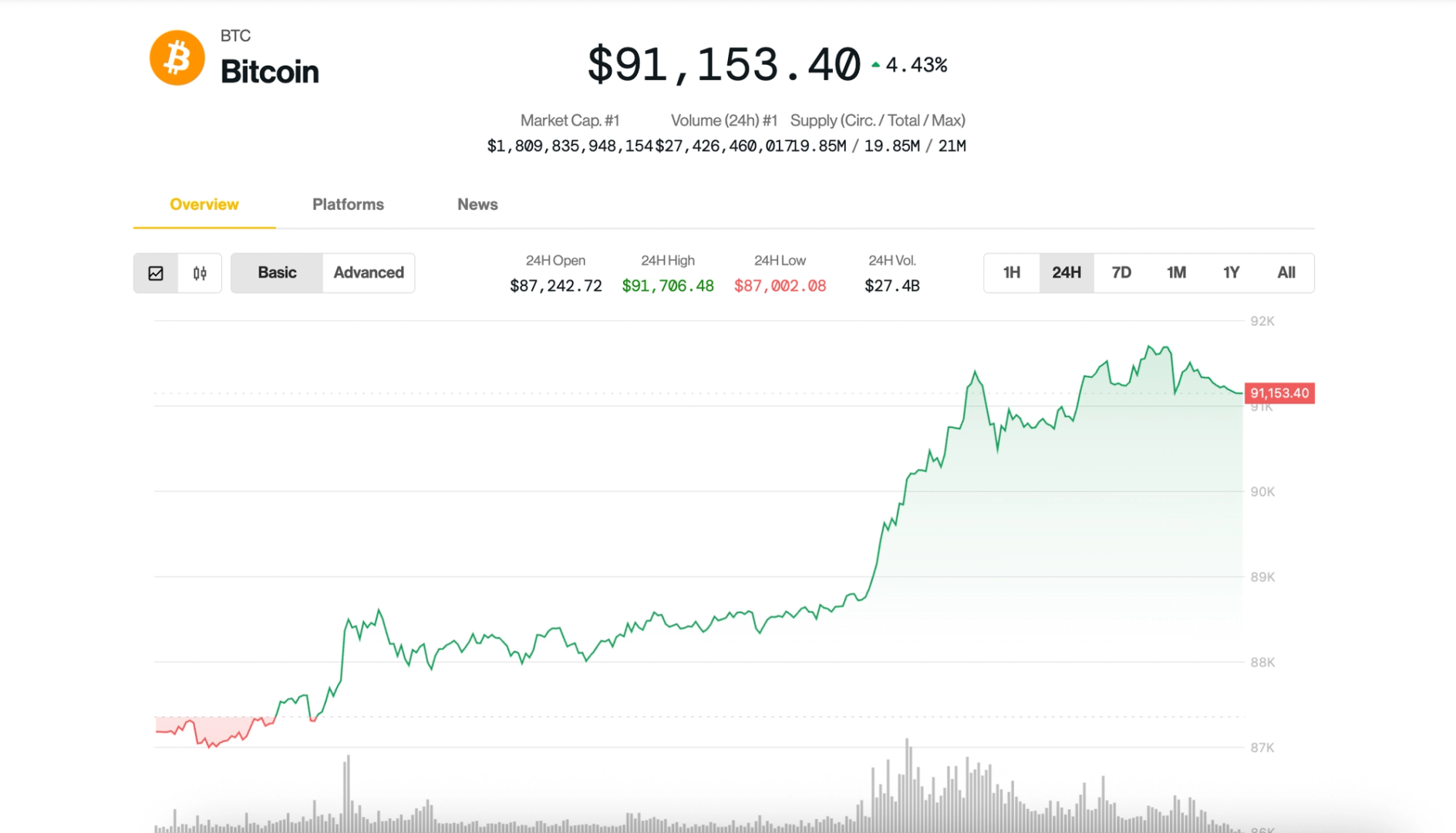Uncategorized
Beyond Incentives: How to Build Durable DeFi

DeFi is getting a boost from the emergence of a host of new blockchains such as BeraChain, TON, Plume, Sonic and many others. Each new chain brings with it a flood of incentives, enticing users with yields that echo the early days of yield farming in 2021.
But is any of this sustainable? As every new blockchain fights to build momentum, they inevitably confront the same dilemma: how to build sustainable ecosystems that survive beyond the end of their incentive programs.
Incentives remain one of crypto’s most powerful bootstrapping tools — an elegant solution to the cold-start problem of attracting users and liquidity. Yet, incentives are just a starting point. The ultimate goal is to build self-sustaining economic activity around DeFi protocols.
While the broader DeFi market has evolved considerably, the foundational approach to incentive-driven growth has changed little. For DeFi to thrive in this new phase, these strategies must be adapted to reflect the realities of today’s capital dynamics.
Some Key Challenges of Capital Formation in DeFi
Despite the obvious need, most incentive programs end up failing or producing underwhelming results. The composition of the current DeFi market is very different from 2021 where it was relatively simple to run an incentive program. The market has changed and there are some key aspects to consider when thinking about capital formation in DeFi.
More Blockchains Than Relevant Protocols
In traditional software ecosystems, platforms (layer-1s) typically give rise to a larger, diverse set of applications (layer-2s and beyond). But in today’s DeFi landscape, this dynamic is flipped. Dozens of new blockchains — including Movement, Berachain, Sei, Monad (upcoming), and more — have launched or are preparing to. And yet, the number of DeFi protocols that have achieved real traction remains limited to a few standout names like Ether.fi, Kamino, and Pendle. The result? A fragmented landscape where blockchains scramble to onboard the same small pool of successful protocols.
No New Degens in This Cycle
Despite the proliferation of chains, the number of active DeFi investors hasn’t kept pace. Users experience friction, complex financial mechanics, and poor wallet/exchange distribution have all limited the onboarding of new participants. As a friend of mine likes to say, «We haven’t minted many new degens this cycle.» The result is a fragmented capital base that continually chases yield across ecosystems, rather than driving deep engagement in any one.
TVL Fragmentation
This capital fragmentation is now playing out in TVL (total value locked) statistics. With more chains and protocols chasing the same limited pool of users and capital, we’re seeing dilution rather than growth. Ideally, capital inflows should grow faster than the number of protocols and blockchains. Without that, capital simply gets spread thinner, undermining the potential impact of any individual ecosystem.
Institutional Interest, Retail Rails
Retail may dominate the DeFi narrative, but in practice, institutions drive most of the volume and liquidity. Ironically, many new blockchain ecosystems are ill-equipped to support institutional capital due to missing integrations, lack of custody support, and underdeveloped infrastructure. Without institutional rails, attracting meaningful liquidity becomes a steep uphill battle.
Incentive Inefficiencies and Market Misconfigurations
It’s common to see new DeFi protocols launch with poorly configured markets including leading to pool imbalances, slippage issues, or mismatched incentives. These inefficiencies often result in campaigns that disproportionately benefit insiders and whales, leaving little behind in terms of long-term value creation.
Building Beyond Incentives
The holy grail of incentive programs is to catalyze organic activity that persists after the rewards dry up. While there’s no blueprint for guaranteed success, several foundational elements can increase the odds of building a durable DeFi ecosystem.
Real Ecosystem Utility
The hardest but most important goal is building ecosystems with real, non-financial utility. Chains like TON, Unichain, and Hyperliquid are early examples where token utility extends beyond pure yield. Still, most new blockchains lack this kind of foundational utility and must rely heavily on incentives to attract attention.
Strong Stablecoin Base
Stablecoins are the cornerstone of any functional DeFi economy. An effective approach often includes two leading stablecoins that anchor borrowing markets and create deep AMM (automated market maker) liquidity. Designing the right stablecoin mix is critical to unlocking early lending and trading activity.
Major Asset Liquidity
Alongside stablecoins, deep liquidity in blue-chip assets like BTC and ETH lowers the friction for large allocators. This liquidity is crucial for onboarding institutional capital and enabling capital-efficient DeFi strategies.
DEX Liquidity Depth
Liquidity in AMM pools is frequently overlooked. But in practice, slippage risk can derail large trades and stifle activity. Building deep, resilient DEX liquidity is a prerequisite for any serious DeFi ecosystem.
Lending Market Infrastructure
Lending is a fundamental DeFi primitive. A deep borrowing market — particularly for stablecoins — unlocks the potential for a wide range of organic financial strategies. Robust lending markets naturally complement DEX liquidity and increase capital efficiency.
Institutional Custody Integration
Custody infrastructure like Fireblocks or BitGo holds much of the institutional capital in crypto. Without direct integration, capital allocators are effectively locked out of new ecosystems. While often overlooked, this is a critical gating factor for institutional participation.
Bridge Infrastructure
Interoperability is essential in today’s fragmented DeFi world. Bridges like LayerZero, Axelar and Wormhole serve as critical infrastructure for transferring value across chains. Ecosystems with seamless bridge support are far better positioned to attract and retain capital.
The Intangibles
Beyond infrastructure, there are subtle but critical factors that influence success. Integrations with top oracles, the presence of experienced market makers, and the ability to onboard marquee DeFi protocols all help bootstrap a thriving ecosystem. These intangible elements often make or break new chains.
Sustainable Capital Formation in DeFi
Most incentive programs fail to deliver on their original promise. Over-optimism, misaligned incentives, and fragmented capital are common culprits. It’s no surprise that new programs often draw skepticism and accusations of enriching insiders. Yet, incentives remain essential. When designed well, they’re powerful tools to bootstrap ecosystems and create lasting value.
What differentiates successful ecosystems isn’t the size of their incentive programs — it’s what comes next. A solid foundation of stablecoins, deep AMM and lending liquidity, institutional access, and well-designed user flows are the building blocks of sustainable growth. Incentives are not the end game. They’re just the beginning. And, in today’s DeFi, there is most certainly life beyond incentive farming.
Uncategorized
Tesla Reports $951M in Crypto Holdings as it Misses Earnings

Tesla (TSLA) still holds almost $1 billion in bitcoin, according to the automaker’s latest earnings report.
The electric vehicle firm reported digital asset holdings worth $951 million as of March 31, down from $1.076 billion on Dec. 30. Tesla currently holds 11,509 bitcoin in its balance sheet, according to Bitcoin Treasuries data.
The change is almost certainly due to bitcoin’s price depreciating between the two quarters. Data from Arkham Intelligence indicates that Tesla did not perform any transactions in the last three months. Arkham marks Tesla’s holdings as being currently worth $1.049 billion.
A new rule from the Financial Accounting Standards Board (FASB) requires corporate holders of digital assets to begin marking those assets to market each quarter.
Tesla also reported $19.34 billion in revenue for the first quarter of the year; analysts had expected the carmaker to rake in $21.37 billion.
The TSLA shares were up more than 2% in after-hours trading.
Uncategorized
Bitcoin Tops $91K as Trade Optimism Fuels Crypto Rally But Demand Headwinds Remain

Bitcoin (BTC) surged past $91,000 on Tuesday, climbing nearly 5% amid renewed investor optimism and fresh hopes of a thaw in U.S.-China trade tensions, but headwinds persist that could cap further upside, analytics firm CryptoQuant cautioned.
The largest crypto by market capitalization hit $91,700 in the U.S. afternoon, its strongest price since early March. Altcoins followed BTC higher, with Ethereum’s ether (ETH) rising 8% over the past 24 hours above $1,700, and dogecoin (DOGE) and Sui’s native token (SUI) gaining 8.6% and 11.7%, respectively. The broad-market crypto benchmark CoinDesk 20 Index advanced 5.2%.

Markets were buoyed by remarks from U.S. Treasury Secretary Scott Bessent, who reportedly told investors at a closed-door JPMorgan event that the tariff standoff with China was unsustainable. Bessent said de-escalation would come “in the very near future,” characterizing current conditions as a “trade embargo.” However, he cautioned that a more comprehensive deal between the two nations could take even years.
Stocks recovered from yesterday’s decline, with the S&P 500 and the tech-heavy Nasdaq finishing the session 2.5% and 2.7% higher, respectively. Gold, meanwhile, sharply reversed from its record price of $3,500 during the day and was down 1%.
«As capital rotates into safe-haven and inflation-hedging assets, BTC and gold are proving to be key beneficiaries of the exodus from USD risk,» analysts at hedge fund QCP Capital said in a Telegram broadcast.
They highlighted rejuvenating inflows to spot U.S.-listed BTC ETFs and the return of the so-called Coinbase price premium, suggesting demand from American institutional investors. BTC ETF booked over $381 million net inflows on Monday adding to Thursday’s $107 million, according to Farside Investors data.
But not all signs point to a sustained breakout.
Despite the price jump, on-chain data points to fragility beneath the surface, CryptoQuant analysts said in a Tuesday report. Bitcoin’s apparent demand has decreased by 146,000 BTC over the past 30 days—an improvement from the sharp drop in March, but still negative. CryptoQuant’s demand momentum metric, which tracks new investor interest, has deteriorated further to its the most bearish level since October 2024, the report noted.
Market liquidity remains soft, with the report using USDT’s market cap growth as a proxy for crypto liquidity. USDT grew $2.9 billion over the past two months, below its 30-day average. Historically, BTC rallies coincided with USDT growth above $5 billion and above trend — a threshold not yet met.
Adding to the caution, bitcoin is now facing a key resistance zone between $91,000 and $92,000 at around the «Trader’s On-chain Realized Price» metric, a level that has often served as resistance in bearish conditions. CryptoQuant’s on-chain bull score classified current market conditions as bearish, suggesting a pause or pullback could follow if sentiment weakens.
Uncategorized
Unicoin CEO Rejects SEC’s Attempt to Settle Enforcement Probe

Unicoin has rebuffed the U.S. Securities and Exchange Commission’s (SEC) attempt to negotiate a settlement agreement to close an ongoing probe into the Miami-based crypto company, its CEO Alex Konanykhin revealed in a Tuesday letter to investors.

In his letter, Konanykhin said Unicoin was given an “ultimatum” by the SEC to attend a settlement negotiation meeting last week, on April 18.
“We declined to show up,” Konanykhin told CoinDesk, adding that the SEC had made demands ahead of the meeting that he found “unacceptable.” He declined to share specifics, telling CoinDesk that the communication between Unicoin’s lawyers and the SEC was confidential.
Unicoin received a Wells notice — a sort of official heads-up from the SEC that it intends to file an enforcement action against the recipient — in December, shortly before former Chair Gary Gensler stepped down, alleging violations related to fraud, deceptive practices, and the offer and sale of unregistered securities. No official enforcement action has yet been filed.
Since President Donald Trump took office, the SEC has reversed its once-aggressive stance toward crypto regulation, backing off from many of its open investigations into crypto companies, including blockchain gaming firm Immutable and non-fungible token (NFT) marketplace OpenSea, and even some of its ongoing litigation, including against Coinbase and Cumberland DRW.
Other SEC enforcement cases against crypto companies, including its cases against Binance and Tron, have been paused while the parties attempt to negotiate a settlement. The agency recently reached a settlement agreement with Nova Labs, the parent company behind the Helium blockchain, that saw Nova Labs pay a $200,000 fine to settle civil securities fraud charges, and the SEC dropped its claims that Helium (HNT) and other related tokens were securities.
In his letter to investors, Konanykhin claimed that the SEC’s probe has caused “multi-billion-dollar damage” to the company and its investors.
“We would likely be a $10B+ publicly traded company by now if the SEC had not blocked our ICO, stock exchange listing and fundraising,” Konanykhin wrote, adding that the SEC had prevented Unicoin from acting on the “very favorable market opportunities.”
“We were forced into a standstill,” Konanykhin wrote.
The SEC did not respond to a request for comment.
-

 Fashion6 месяцев ago
Fashion6 месяцев agoThese \’90s fashion trends are making a comeback in 2017
-

 Entertainment6 месяцев ago
Entertainment6 месяцев agoThe final 6 \’Game of Thrones\’ episodes might feel like a full season
-

 Fashion6 месяцев ago
Fashion6 месяцев agoAccording to Dior Couture, this taboo fashion accessory is back
-

 Entertainment6 месяцев ago
Entertainment6 месяцев agoThe old and New Edition cast comes together to perform
-

 Sports6 месяцев ago
Sports6 месяцев agoPhillies\’ Aaron Altherr makes mind-boggling barehanded play
-

 Business6 месяцев ago
Business6 месяцев agoUber and Lyft are finally available in all of New York State
-

 Entertainment6 месяцев ago
Entertainment6 месяцев agoDisney\’s live-action Aladdin finally finds its stars
-

 Sports6 месяцев ago
Sports6 месяцев agoSteph Curry finally got the contract he deserves from the Warriors





